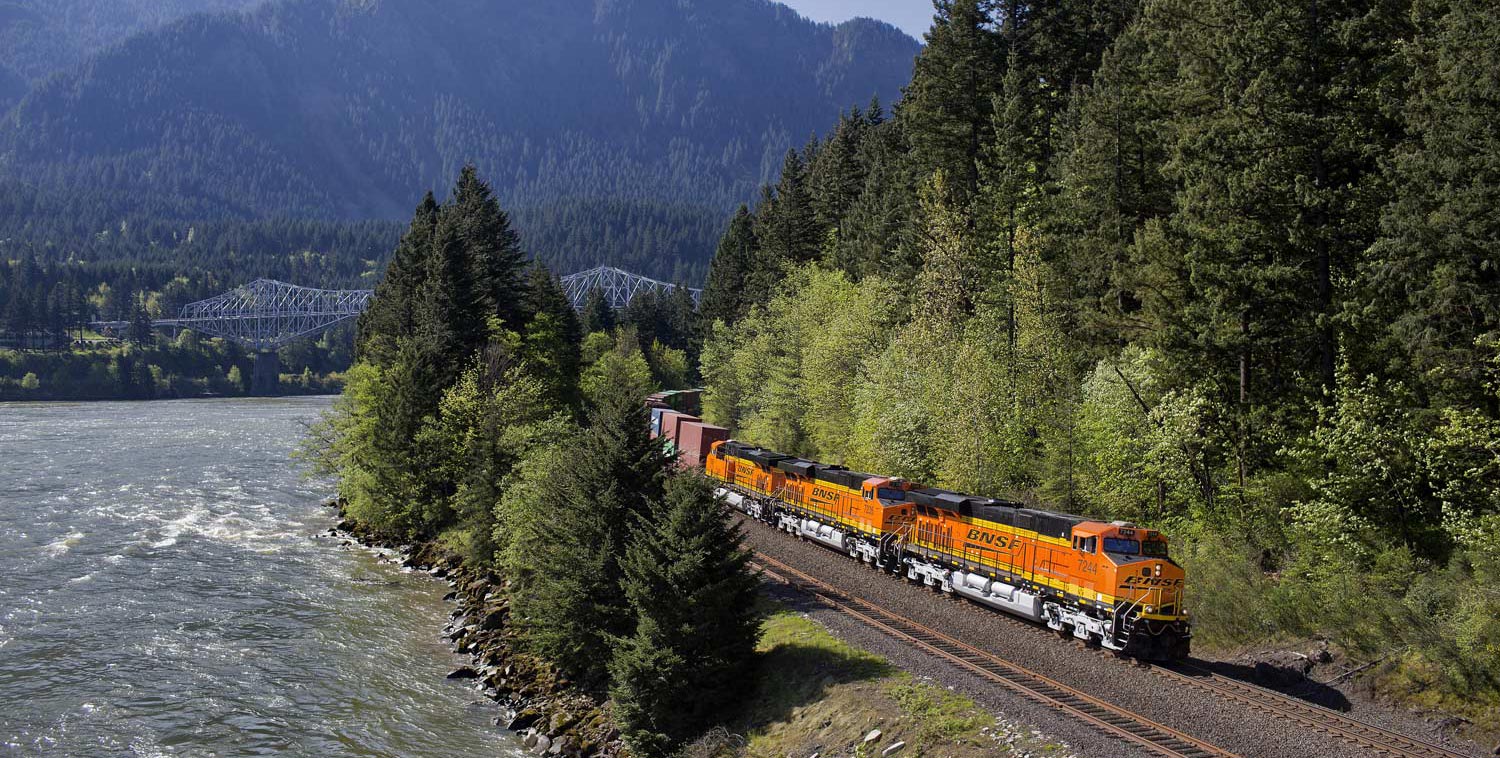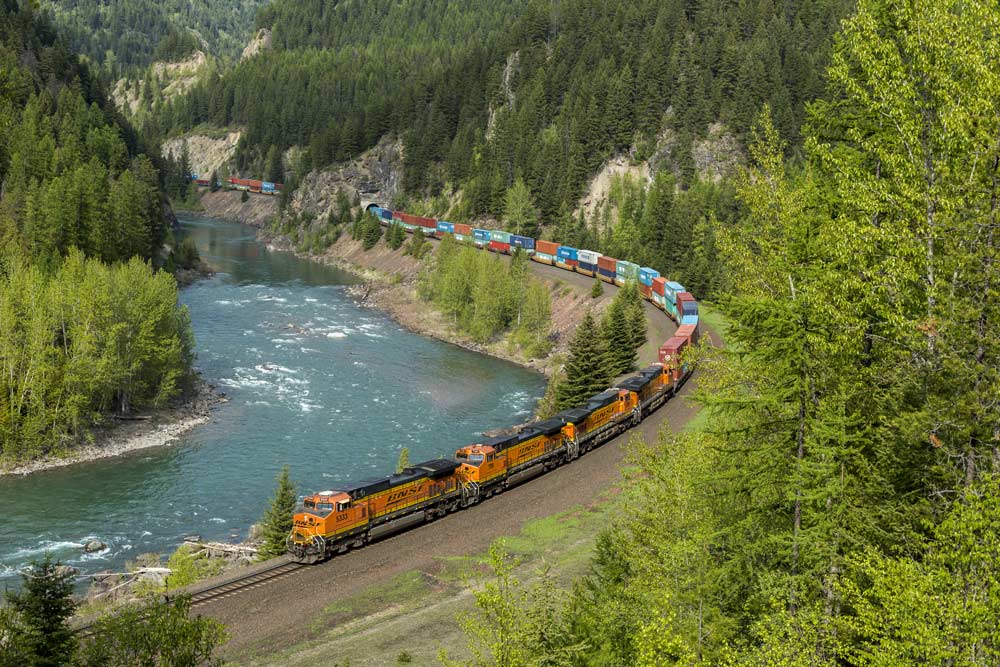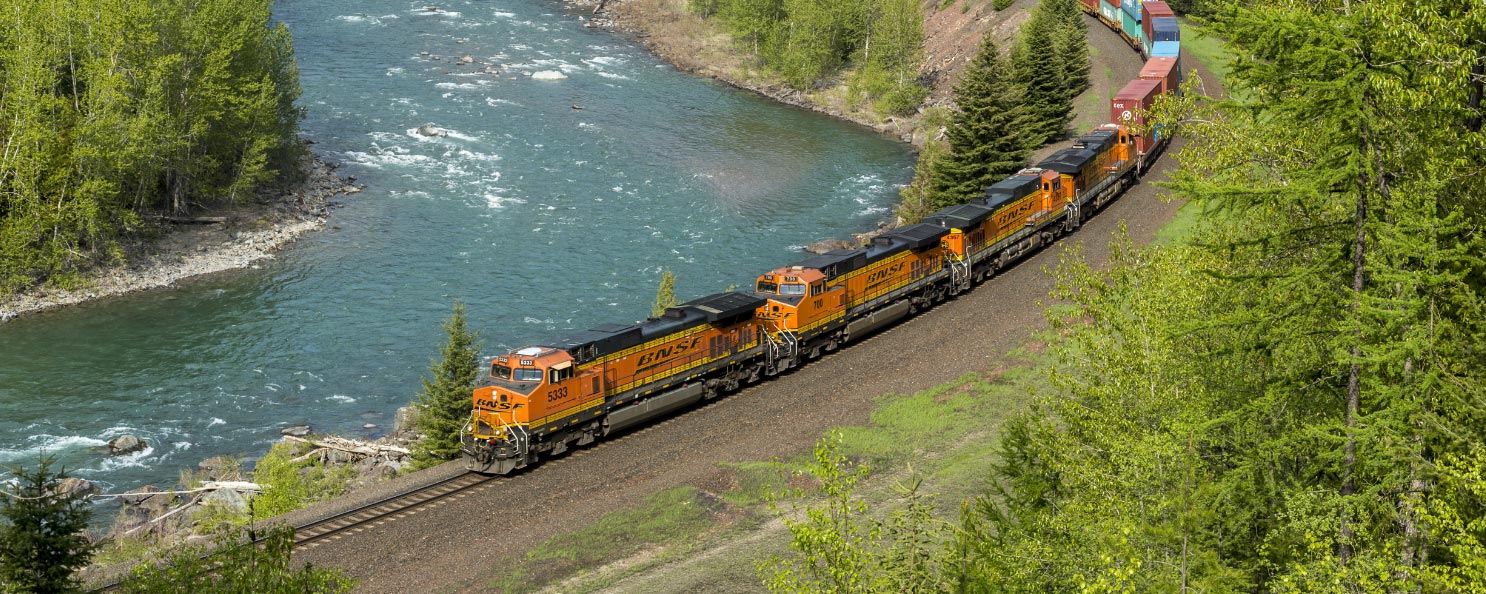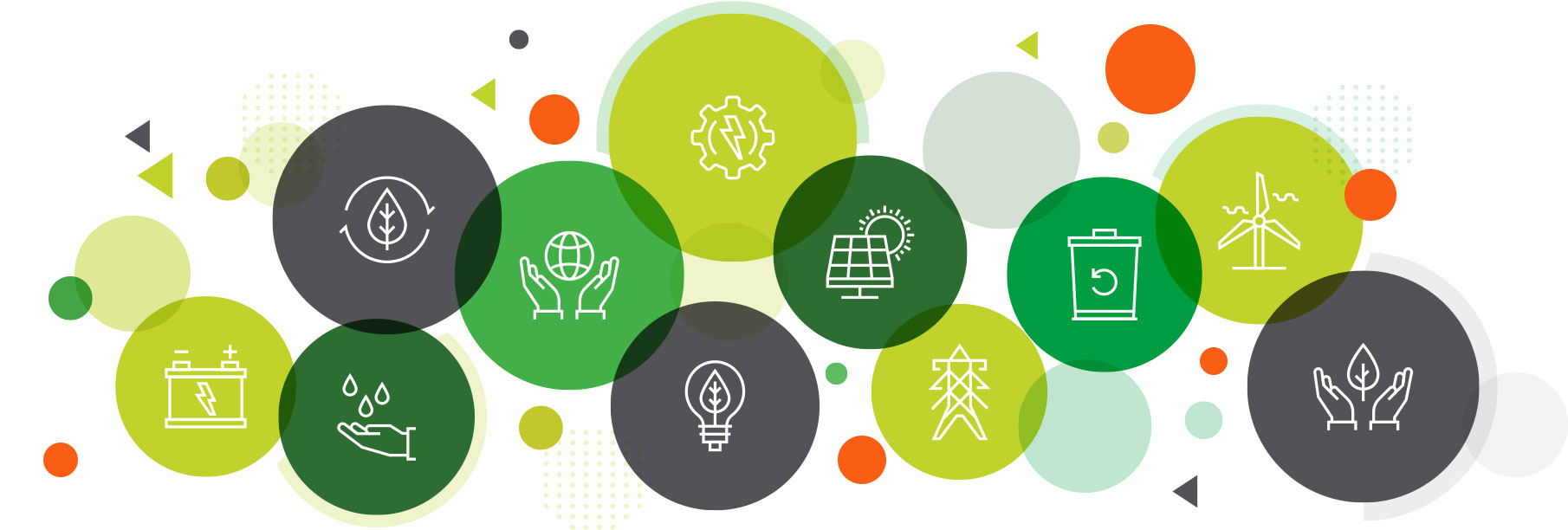At BNSF, we are committed to improving the efficiency of our network in a way that benefits both our customers and the environment.
In 2024, customers avoided 24.6 million metric tons CO2e by shipping by rail instead of solely over the road. That's the equivalent of taking more than 5.7 million vehicles off the road.*
On average, BNSF trains move one ton of freight nearly 500 miles on just one gallon of diesel fuel.*
On average, trains are three to four times more fuel efficient than their highway counterparts and lower greenhouse gas emissions by more than 75%.**
If 10% of the freight shipped by the largest trucks were moved by rail instead, annual greenhouse gas emissions would fall by nearly 20 million tons.**

Our customers care
By using rail to transport goods, our customers are able to reduce their environmental impact while remaining competitive in the market. That's what makes a partnership with BNSF so effective.

Move freight more than three times as far as trucks per gallon of diesel fuel** and lower greenhouse gas emissions
Manage carbon footprint by managing fuel efficiency and reducing environmental impact
Generate value and maintain competitive edge by reducing transportation emissions
Partnering in the pursuit of sustainability
Supporting a "circular economy" through transporting low-carbon renewable fuels, recyclable plastics, low-carbon cement and other reusable composites as well as materials for emerging power sources, such as solar panels and lithium-ion batteries.
Utilizing Logistics Centers and BNSF Certified Sites to increase efficiency.
Sustainably transporting low-carbon renewable fuels such as renewable diesel, biodiesel, renewable naphtha and sustainable aviation fuel.
Utilizing Logistics Centers and BNSF Certified Sites to increase efficiency.
Supporting transportation needs for the shipment of renewable fuels feedstocks such as vegetable oils, recycled animal fats, used cooking oils and greases.
Utilizing Logistics Parks, Logistics Centers and BNSF Certified Sites to create a more sustainable, streamlined supply chain for our customers by locating them near growing markets.
Working with local communities on the management and new construction of Logistics Parks to understand the needs and expectations of these communities while also reducing environmental and social impacts and helping support economies with jobs and livelihoods.
Supporting a “circular economy” through transporting low-carbon renewable fuels, recyclable plastics, low-carbon cement and other reusable composites as well as materials for emerging power sources, such as solar panels and lithium-ion batteries.
Utilizing Logistics Centers and BNSF Certified Sites to increase efficiency.
Sustainably transporting low-carbon renewable fuels such as renewable diesel, biodiesel, renewable naphtha and sustainable aviation fuel.
Utilizing Logistics Centers and BNSF Certified Sites to increase efficiency.
Supporting transportation needs for the shipment of renewable fuels feedstocks such as vegetable oils, recycled animal fats, used cooking oils and greases.
Utilizing Logistics Parks, Logistics Centers and BNSF Certified Sites to create a more sustainable, streamlined supply chain for our customers by locating them near growing markets.
Working with local communities on the management and new construction of Logistics Parks to understand the needs and expectations of these communities while also reducing environmental and social impacts and helping support economies with jobs and livelihoods.
Awarding Sustainability Achievement


We care
At BNSF, we're doing more than just helping to reduce our customers' carbon emissions. We're also leading the way when it comes to sustainable practices. We're partners in developing the next generation of locomotives, and we're testing new technologies that will reduce carbon emissions.

Clean initiatives and technologies take time, money and determination to achieve success. Some will not make it past the drawing board, and those that do undergo significant reengineering. Here are a few initiatives we're working on now:
Partnering in the development of battery-powered locomotives and a hydrogen fuel cell locomotive demonstration to reduce our environmental impact, increase our fuel efficiency and lower our operational costs.
We have installed idling reduction systems on more than 99% of our active locomotive fleet as well as equipped more than 4,000 locomotives with Energy Management Systems, which allows the throttle and dynamics brakes to be controlled automatically, like cruise control to determine the fuel-efficient way to operate a train.
BNSF intermodal facilities utilize zero-emission equipment such as wide-span electric cranes and battery-electric hostlers, forklifts and drayage trucks within many of our intermodal facilities to support reduced carbon emissions.
Expanding the use of solar power at our facilities and across our track signal network.
In 2022, we began testing a B20/R80 blend of fuel, which is a mixture of 20% biodiesel and 80% renewable diesel. Initial testing results now indicate up to 10% biodiesel and up to 50% renewable diesel can be used in our locomotives.
In 2023, BNSF executed a deep dive into our development project processes and established a company-specific playbook with a focus on sustainable development and communities, that encompasses the entire lifespan of a project, from site selection, design and construction to operation and maintenance.
BNSF expects our suppliers to be engaged in programs which increase sustainable practices and materials (i.e., innovative products/services, end-of-life impact, life cycle assessment, and all others which can have a positive environmental impact)
Including sustainability components (i.e., innovative products/services, end-of-life impact, life cycle assessment) in supplier engagements, as outlined in our supplier guide.
We actively address environmental impacts at legacy sites – locations where predecessor railroads and others may have conducted operations for up to a century. In the last decade, we have rehabilitated approximately 100 sites and invested approximately $230 million toward remediation efforts.
Providing customers with a low-carbon option compared with long-haul trucks
Continuing to improve locomotive fuel efficiency and operational efficiency to meet our customers' needs and on-time performance
Investing in network infrastructure and equipment, such as locomotives, that positively impact the environment and our communities
Reaching our carbon emission targets
